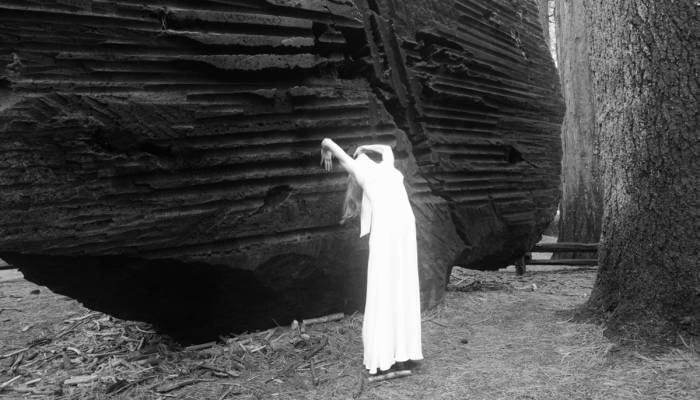Fushimi Inari-Taisha; The Temple of the 10,000 Thresholds
At one of the most overwhelming Shinto shrines in all of Japan, thousands of vermilion gateways mark the boundary between two worlds.
Two huge foxes, one on each side of the entrance, are the guardians of one of the most spectacular temples in the world, the Fushimi Inari-Taisha. A huge sanctuary, it’s located on Mount Inariyama, on the outskirts of Kyoto, and decorated with more than 10,000 traditional Japanese gateways or Torii, the symbolic thresholds between the mundane and the sacred.
The first structures that make up the magical labyrinth were built in the year 711 CE, during Japan’s Heian period. The main temple at the entrance to the complex dates from the year 1499. The Fushimi Inari-Taisha is dedicated to the deity of rice, Inari. Within the pantheon of Shinto – the native religion of Japan based on the worship of nature spirits – Inari enjoys a privileged place as the patron of traders and businessmen.
The main sanctuary is at the foot of a mountain, and the roads ascending to its summit are decorated with thousands of torii that have been donated by the faithful. The roads extend for more than four kilometers leading to multiple smaller temples and more than 32,000 altars, or bunsha, silently inhabiting the heights.
The temple to Inari is also full of images and sculptures of foxes (kitsune, in Japanese), spirits of the Japanese mythology and messengers of the god Inari. The symbol recalls the frequency with which foxes are found prowling rice barns, and the reason they’re often represented with a key in the muzzle; the key to the barn. The main icon of worship in the temple though, drawing millions of faithful each year, is a mirror. A paradox that invites deep reflection.

The legend of Fushimi Inari-Taisha’s creation speaks of the many years Irogu no Hatanokimi, an aristocrat, practiced with his bow, using a mochi (a rice cake) as his target. From one moment to the next, the rice cake became an immense swan which took flight and then perched on top of a mountain. There, the bird was transformed into rice plants, which grew into a fertile harvest. Hatanokimi understood the event as a message from the gods and built a temple to the god, Inari. The site was not at the location of the temple today, as it was moved in 816 CE.
The beautiful gateways adorning the paths to this magnificent temple, a sacred labyrinth of Vermilion color, are portals that communicate two worlds and make of the space an incomparable and strange landscape, populated with symbols showing the elegant and incomparable spirit of Japan and its immense love for nature and beauty.
Related Articles
When ancient rituals became religion
The emergence of religions irreversibly changed the history of humanity. It’s therefore essential to ask when and how did ancient peoples’ rituals become organized systems of thought, each with their
Larung Gar, the valley that is home to thousands of Buddhist monks
If we think about the monastic life it is very probable that we think about solitude, seclusion, silence and a few other qualities whose common denominator is the appropriate isolation for mediation
Dialogue with the Dalai Lama on science and spirituality
The Dalai Lama has been interested in science since he was a child. Over the years he’s visited many laboratories and has attended conferences that discuss consciousness from the scientific point of
A New Year's resolution for the earth
Worrisome quantities of waste are generated by human populations. Especially in cities, these have reached unprecedented and alarming levels. A largely uncontrolled practice, it affects everything on
The Dark Mountain Project: or how literature can confront ecocide
One impulse from a vernal wood May teach you more of man, Of moral evil and of good, Than all the sages can. Wordsworth, “The Tables Turned” (fragment) Words are elementary. The only reason we can
Are there no women in the history of philosophy?
Do only men philosophize? This could sound like a silly question, but if we quickly review the names of philosophers, from Aristotle to Slavoj Žižek, it would appear to be an exercise that is
Things that are about to disappear: photography as environmental conservation
Cristina Mittermeier is the founder of the International League of Conservationist Photography (iLCP), and is at the front of a modern movement to use photography with environmental purposes. Her work
Architecture And Music; An Affair That Acts On The Matter
A composition is like a house you can walk around in. — John Cage Perhaps music, more than the art of sound, is the art of time. That’s why its communion with space, and architecture, is so often so
Psycho-geography (On The Ritual Casting of a City)
Mrs. Dalloway walked down the streets of London guided by an “internal tide” that made her stop somewhere, enter a store, turn at the corner and continue her journey, as if she were adrift. La dérive
A Theme Park Inspired by Hayao Miyazaki is About to Open …
One of animation’s most spectacular exponents, Hayao Miyazaki, is the artist who transformed the direction of traditional animation forever.










